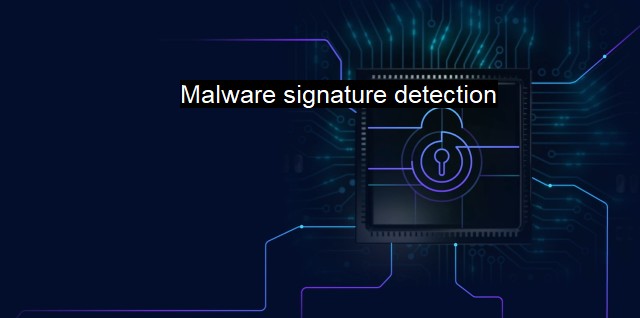What is Malware signature detection?
Malware Signature Detection: History, Process, and Significance in Cybersecurity
Malware signature detection is a technique used in cybersecurity to identify malicious software. It is one of the standard tactics employed by various antivirus programs to keep your systems safe from harmful threats. This significant aspect of security management understands, identifies, and cancels the pervasive threats posed by malware by using unique signature strings that distinguish one form of malware from another.This approach carries its functions based on the specific representative codes (signatures) of malware. A malware signature can be depicted as a unique pattern or an irregularity in the code that makes the malware uniquely identifiable. These signatures are then stored in a database after being identified and analyzed by cybersecurity teams. The antivirus software applies these signatures (hash values, string of specific programs, and actions) to detect virus or malware in your system.
In simple words, each malware has some code that it uses when it invades a computer system. This code is unique and can be recognized when the malware strikes again. The antivirus or the security software uses this code and guess if it matches with the identities found in the malware database. This is sort of like the antivirus seeing a suspicious-looking person passing by in the street and matches that person with its database of known bad guys or criminals.
Malware signature detection can significantly improve the level of security provided to computer systems. It sort of operates along the same vein as fingerprinting, which is used to validate people's identities. Its universality significantly makes it possible to conduct routine footwear checks on almost every digital connected/commercial user worldwide.
The malware signature detection method offers a reliable means to enhance situational awareness effectively. With this technique, rather than tuning in for hazardous behavior, cybersecurity teams can design incoming traces to default to a regularly updated stable record of malicious signature codes highlighting any potential exploits or infections. The availability of antimicrobial databases accords users with a unique protecting variety that guarantees sustainable and robust threat removal performance.
Despite being a significant means of combating security threats, malware signature detection inherently contains limitations. The primary constraint is that this method only identifies and tackles known threats. Advanced Persistent Threats (APTs), Zero-Day attacks, and other sophisticated versions of malware cloaking possibilities remain a daunting threat. Updating databases against these 'unknowns' forms a tiring task in cybersecurity methods fueled by garnering driving factors that enable these threats in the first armor place.
Considering that it depends heavily on identifying threats based on previous knowledge, repeated malware evolution forms a significant Achilles' heel to signature detection. Hackers change the code of malware, making the creation and multiplication of malware variants faster than they can be addressed.
Cybersecurity teams designing signature detection methodologies must ponder the backdrop of balancing excessive false positives with adequate threat detection. Algorithms receiving inputs horribly fail if not adjusted suitably and hence demand acute care and knowledge about orchestrating the grand attack detection sequence.
Malware signature detection is a critical component of cybersecurity that allows for the identification of known threats. By using established patterns or codes of recognized malware, this method aids in identifying potential threats and mitigating potential damages to systems. as advanced and more complex threats develop, there is a need for more sophisticated and robust malware detection strategies that can identify and combat these emerging threats.

Malware signature detection FAQs
What is malware signature detection?
Malware signature detection is a cybersecurity technique used by antivirus software to identify and remove known malware from a device. It works by comparing the digital fingerprints, or signatures, of files on a device to a database of known malware signatures.How does malware signature detection work?
Malware signature detection works by scanning files on a device for patterns that match known malware signatures in a database. When a matching signature is found, the antivirus software can then quarantine or delete the file to prevent further harm to the device.What are the limitations of malware signature detection?
Malware signature detection can only detect and remove known malware that has already been identified and added to a database. Therefore, it cannot detect new or unknown malware that has not yet been discovered and added to the database. Additionally, some malware can use techniques to evade signature detection, such as code obfuscation or polymorphism.How can I ensure my antivirus software's malware signature database is up to date?
To ensure your antivirus software's malware signature database is up to date, you should regularly update your antivirus software. Most antivirus software has an automatic update feature that will download and install the latest malware signature database. You can also manually check for updates and install them if needed.| | A | | | B | | | C | | | D | | | E | | | F | | | G | | | H | | | I | | | J | | | K | | | L | | | M | |
| | N | | | O | | | P | | | Q | | | R | | | S | | | T | | | U | | | V | | | W | | | X | | | Y | | | Z | |
| | 1 | | | 2 | | | 3 | | | 4 | | | 7 | | | 8 | | |||||||